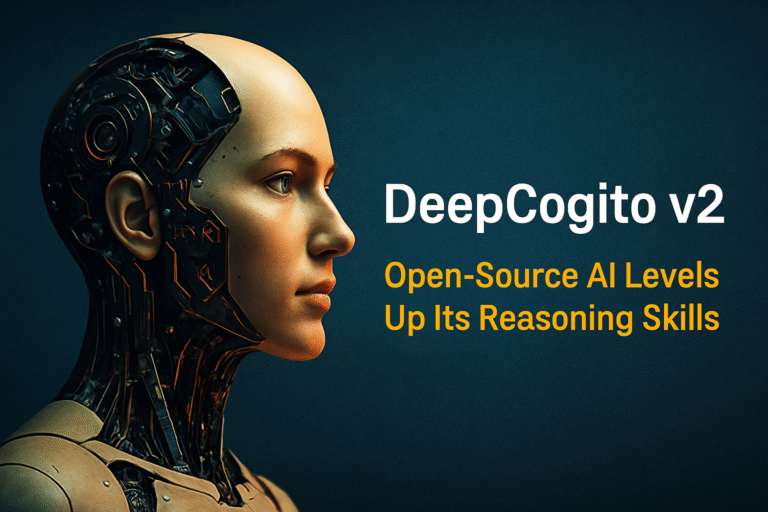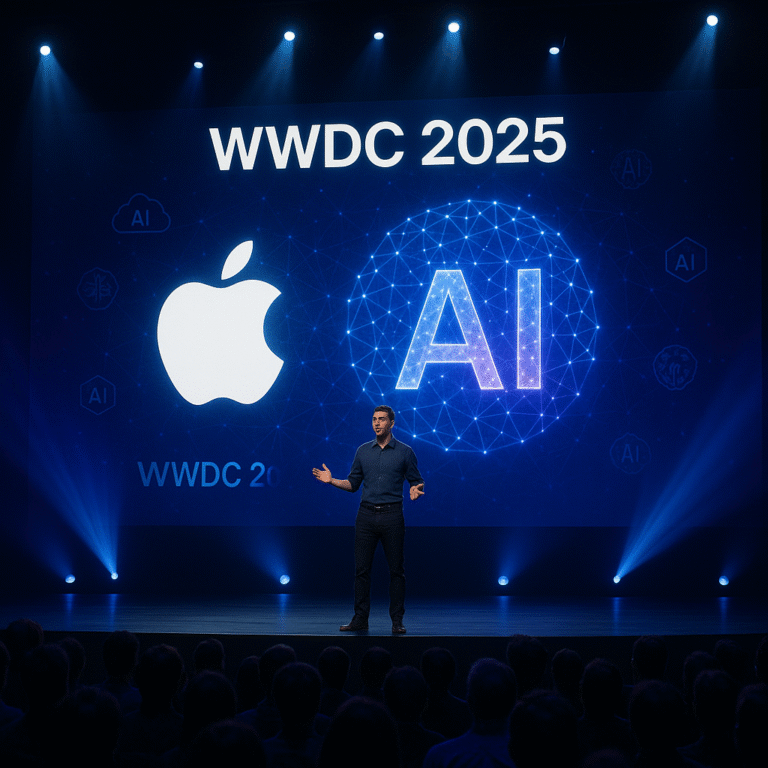
The European Union’s Artificial Intelligence Act (AI Act) represents the world’s first comprehensive horizontal regulation for AI. It has now moved from legislative text to operational reality. As we navigate Spring 2025, initial grace periods for certain provisions are expiring. Furthermore, the newly established European AI Office, alongside national competent authorities, is beginning to flex its supervisory muscles. For organizations developing, deploying, or distributing AI systems within or impacting the EU market, understanding EU AI Act compliance strategies is no longer theoretical. Instead, it’s a critical business imperative. This article explores the emerging landscape. Specifically, it focuses on potential early enforcement lessons, persistent compliance challenges, and effective global strategies for navigating this landmark regulation.
The dust is settling, however, the implementation journey remains complex. Companies are grappling with classifying their AI systems. Moreover, they face fulfilling stringent documentation requirements and embedding ethical considerations into their development lifecycles. What early signals are enforcement bodies sending? Where are companies commonly stumbling? And critically, how can organizations worldwide develop robust EU AI Act compliance strategies? These strategies should not only mitigate risk but also build trust and potentially confer a competitive advantage.
Recap: The EU AI Act’s Risk-Based Framework (Briefly)
Before diving into 2025 realities, a quick refresher on the AI Act’s core structure is essential. It employs a risk-based approach. Essentially, it categorizes AI systems into four tiers:
- Unacceptable Risk: These AI practices pose a clear threat to fundamental rights and are banned outright. Examples include social scoring by public authorities, most real-time remote biometric identification in public spaces, and manipulative techniques.
- High Risk: AI systems used in specific critical areas face strict requirements before market placement and throughout their lifecycle. These areas cover medical devices, critical infrastructure, employment, education, law enforcement, and migration. Requirements include data governance, documentation, transparency, human oversight, accuracy, robustness, and cybersecurity. Annex III lists these use cases, although it is subject to future updates.
- Limited Risk: AI systems with specific transparency risks, such as chatbots or deepfakes, must inform users. Users need to know they are interacting with AI or that content is artificially generated/manipulated.
- Minimal Risk: AI systems posing little to no risk face no additional obligations beyond existing legislation. For instance, spam filters or AI in video games fall here. The vast majority of AI systems are expected to be in this category.
Additionally, the Act introduces specific rules for General Purpose AI (GPAI) models. Providers of foundational models with systemic risks, in particular, face obligations regarding transparency, documentation, and risk management.
Early Enforcement Signals & Lessons Learned (Spring 2025 Focus)
As of April 2025, full enforcement across all high-risk categories might still be ramping up. Nevertheless, initial activities from the European AI Office and national authorities likely provide valuable clues. Based on regulatory priorities and common implementation hurdles, here are potential early enforcement lessons and observations:
Spotlight on High-Impact Areas
Initial enforcement actions and guidance are likely concentrating on areas with the most significant potential impact. Therefore, expect scrutiny on:
- Biometric Identification Systems: Authorities will be keen to enforce the strict conditions and prohibitions related to remote biometric identification. Any misuse or non-compliant deployment is a probable target.
- AI in Employment & Recruitment: Systems used for CV sorting, performance monitoring, or promotion decisions face high scrutiny due to discrimination risks. Consequently, non-compliance here could attract early attention.
- Critical Infrastructure & Medical Devices: Given the safety implications, AI systems in these domains will likely undergo rigorous conformity assessments and audits. Failures here could lead to swift action.
- Transparency for Chatbots & Deepfakes: Ensuring compliance with simpler transparency obligations might be an area for early “wins” for regulators, setting precedents.
Clarification Through Guidance and Q&A
The European AI Office is likely publishing initial guidance documents and FAQs by now. These aim to address ambiguities identified during early implementation. Key areas requiring clarification probably include:
- Precise interpretation of terms like “significant risk” or “subliminal techniques.”
- Specific documentation requirements for different high-risk systems.
- Practical expectations for human oversight mechanisms.
- The exact responsibilities of different actors in the AI value chain (providers, deployers, etc.).
Common Compliance Pitfalls Emerging
Observations from early audits and company preparations likely reveal common stumbling blocks:
- Underestimation of Scope: Companies may fail to realize certain internal tools fall under the Act’s broad definition of an “AI system.”
- Inadequate Risk Classification: Misclassifying a high-risk system as limited or minimal risk is a serious error. As a result, companies might fail to implement necessary safeguards.
- Insufficient Data Governance: Many lack robust processes for ensuring training data quality, relevance, and bias mitigation.
- Documentation Gaps: Failing to maintain detailed technical documentation and records for high-risk systems is another common issue.
- “Check-the-Box” Mentality: Some implement superficial measures rather than genuinely embedding ethics and risk management into AI development.
While major fines might still be infrequent in early 2025, warnings and orders to comply are significant enforcement tools. Furthermore, reputational damage is a real risk. Robust EU AI Act compliance strategies are essential to avoid these pitfalls.
Diving Deeper: Key Compliance Challenges in Practice
Translating the AI Act’s legal text into concrete operational measures presents ongoing challenges:
High-Risk AI System Identification & Classification
Accurately determining if an AI system is high-risk remains a primary hurdle. This requires understanding both the technology and its specific context of use. Moreover, ambiguities in use-case definitions necessitate careful legal and technical assessment. Organizations need clear internal processes, perhaps involving external expertise, for reliable classification.
Data Governance and Quality for High-Risk AI
Meeting the stringent data governance requirements (Article 10) is resource-intensive. This includes ensuring datasets are relevant, representative, error-free, and complete. Crucially, it involves proactive examination and mitigation of potential biases. Detecting and addressing bias effectively requires specialized tools, diverse testing teams, and ongoing monitoring. Thus, this forms a core part of practical EU AI Act compliance strategies.
Transparency and Explainability Requirements
High-risk systems require clear instructions and adequate transparency (Article 13). This covers capabilities, limitations, and expected performance. The Act doesn’t mandate full “explainability” always. However, understanding how a system works is often crucial for validation and human oversight. Developers might use tools and techniques, for example, those explored in platforms like Google AI Studio, to better grasp model behavior. (While primarily a dev tool, the interaction principles are relevant). This understanding aids in creating appropriate user documentation later.
Implementing Effective Human Oversight
Designing appropriate human oversight measures (Article 14) is context-dependent and challenging. Oversight shouldn’t be merely symbolic. Instead, it requires defining specific roles, responsibilities, and intervention points. Equally important, overseers must have the necessary authority, competence, and support to effectively monitor and intervene (e.g., overriding the system).
Establishing Robust Documentation and Record-Keeping
High-risk AI systems need comprehensive technical documentation (Annex IV) before market placement. This covers design, data, testing, and risk management. Furthermore, automatic logging capabilities are required to trace system functioning (Article 12 & 20). Setting up and maintaining these records requires dedicated processes and potentially specialized platforms.
Global Compliance Strategies: Beyond EU Borders
The AI Act has significant extraterritorial reach. Consequently, it impacts companies globally. Developing effective EU AI Act compliance strategies requires a worldwide perspective.
Determining Applicability for Non-EU Companies
The Act applies broadly:
- To providers placing AI systems on the EU market, regardless of location.
- To deployers (users) of AI systems located within the EU.
- To providers and deployers outside the EU if the AI system’s output is used in the EU.
This wide scope means many international companies need to comply if their products touch the EU market.
Harmonization vs. Divergence: The Global Regulatory Patchwork
While the EU AI Act is a frontrunner, other regions develop their own approaches (e.g., US NIST Framework, UK’s pro-innovation stance, China’s specific rules). Companies operating globally face navigating this patchwork. Should they adopt the EU’s stricter rules globally (the “Brussels Effect”)? Or maintain separate compliance streams? Many find aligning with AI Act principles provides a strong global foundation for responsible AI, even if specific rules differ.
Leveraging Compliance for Competitive Advantage
Proactively embracing robust EU AI Act compliance strategies can be more than a cost. In fact, it can build trust with customers, partners, and regulators. Demonstrating responsible AI practices can become a significant market differentiator. This, in turn, enhances brand reputation and potentially attracts investment.
The Role of International Standards
Adhering to harmonized technical standards can facilitate meeting AI Act requirements. Standards bodies are actively working on these. For instance, ISO/IEC 42001 provides a framework for an AI Management System (AIMS). This helps structure governance and risk management aligned with AI Act principles. Organizations can find more information from sources like the International Organization for Standardization (ISO). Adopting such standards can streamline compliance.
Sector-Specific Considerations
The impact of EU AI Act compliance strategies varies across sectors:
- Healthcare: Tight integration with Medical Device Regulations (MDR/IVDR) is crucial. Ensuring validation, safety, and surveillance for AI medical devices is paramount.
- Finance: AI for credit scoring or fraud detection faces high-risk scrutiny. This requires careful bias assessment and explainability.
- Employment: HR departments using AI must rigorously assess tools for fairness and non-discrimination.
- Education: AI tools assessing students or tailoring education are high-risk. This highlights the complex intersection of technology and pedagogy, demanding careful implementation, as explored in discussions about how AI is changing education. Transparency towards students and educators is key here.
Tools and Resources for Compliance
Navigating the AI Act is complex, yet resources are emerging:
- Legal & Consultancy Services: Specialized firms offer guidance.
- AI Governance Platforms: Software solutions help manage AI inventories, risk assessments, documentation, and workflows.
- Internal Training & Expertise: Building internal capacity through training is crucial for sustainable adherence.
- Industry Collaboration: Sharing best practices within industry associations can be beneficial.

Conclusion: Proactive Engagement in an Evolving Landscape
As we stand in Spring 2025, the EU AI Act actively shapes global AI development. Early enforcement actions provide critical insights. Therefore, robust, proactive EU AI Act compliance strategies are essential. The challenges – classification, data quality, human oversight, documentation, global navigation – are significant but manageable.
Organizations should treat compliance not just as a legal hurdle. Rather, view it as an opportunity to build trust, enhance quality, and demonstrate ethical leadership. This path leads to better positioning for success. The journey requires continuous monitoring, investment in processes and expertise, and leveraging appropriate tools. Ultimately, the era of unregulated AI in critical domains is closing. The era of responsible, accountable AI, guided by frameworks like the EU AI Act, is firmly underway. Adapting requires diligence, resources, and strategic commitment from leadership.






Right now it looks like Expression Engine is the preferred blogging platform available right now. (from what I’ve read) Is that what you’re using on your blog?
Este site é realmente fascinate. Sempre que consigo acessar eu encontro coisas incríveis Você também vai querer acessar o nosso site e saber mais detalhes! Conteúdo exclusivo. Venha saber mais agora! 🙂
Este site é realmente fascinate. Sempre que acesso eu encontro novidades Você também pode acessar o nosso site e descobrir mais detalhes! Conteúdo exclusivo. Venha descobrir mais agora! 🙂
I was suggested this website by my cousin. I’m not sure whether this post is written by him as no one else know such detailed about my difficulty. You’re incredible! Thanks!
Magnificent website. Plenty of helpful info here. I’m sending it to several friends ans additionally sharing in delicious. And obviously, thanks on your effort!
Hi there, i read your blog occasionally and i own a similar one and i was just wondering if you get a lot of spam feedback? If so how do you prevent it, any plugin or anything you can recommend? I get so much lately it’s driving me crazy so any support is very much appreciated.
I really like your writing style, excellent info , regards for posting : D.
whoah this blog is fantastic i love reading your articles. Keep up the great work! You know, many people are searching around for this information, you could aid them greatly.
It’s the best time to make some plans for the future and it is time to be happy. I have read this post and if I could I wish to suggest you some interesting things or advice. Perhaps you could write next articles referring to this article. I desire to read even more things about it!
I like this site very much, Its a very nice billet to read and find information.
Hey there, I think your blog might be having browser compatibility issues. When I look at your blog site in Firefox, it looks fine but when opening in Internet Explorer, it has some overlapping. I just wanted to give you a quick heads up! Other then that, superb blog!
An interesting discussion is worth comment. I think that you should write more on this topic, it might not be a taboo subject but generally people are not enough to speak on such topics. To the next. Cheers